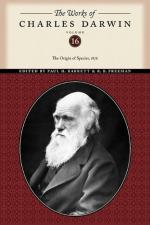Agassiz insists that ancient animals resemble to a certain extent the embryos of recent animals of the same classes; or that the geological succession of extinct forms is in some degree parallel to the embryological development of recent forms. I must follow Pictet and Huxley in thinking that the truth of this doctrine is very far from proved. Yet I fully expect to see it hereafter confirmed, at least in regard to subordinate groups, which have branched off from each other within comparatively recent times. For this doctrine of Agassiz accords well with the theory of natural selection. In a future chapter I shall attempt to show that the adult differs from its embryo, owing to variations supervening at a not early age, and being inherited at a corresponding age. This process, whilst it leaves the embryo almost unaltered, continually adds, in the course of successive generations, more and more difference to the adult.
Thus the embryo comes to be left as a sort of picture, preserved by nature, of the ancient and less modified condition of each animal. This view may be true, and yet it may never be capable of full proof. Seeing, for instance, that the oldest known mammals, reptiles, and fish strictly belong to their own proper classes, though some of these old forms are in a slight degree less distinct from each other than are the typical members of the same groups at the present day, it would be vain to look for animals having the common embryological character of the Vertebrata, until beds far beneath the lowest Silurian strata are discovered—a discovery of which the chance is very small.
On the succession of the same types within the same areas, during the later tertiary periods.




